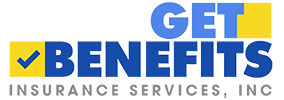
The Affordable Care Act (ACA) has made a number of significant changes to group health plans since the law was enacted in 2010. Many of these key reforms became effective in 2014 and 2015, including health plan design changes, increased wellness program incentives and the employer shared responsibility penalties.
Translation? We’re in pretty deep, so a full repeal of the ACA is unlikely under a new President. In the mean time, these are the changes and compliance topics that will be relevent in 2017.
To prepare for 2017, employers should review upcoming requirements and develop a compliance strategy.
Grandfathered plans
If you’re still on a Grandfathered (Pre-ACA) plan, now is the time to review it, and confirm that it hasn’t changed so that it is no longer elligable. A licenced insurance agent can help you review the details.
Cost-sharing limits
The ACA’s overall annual limit on cost-sharing (also known as an out-of-pocket maximum) applies for all non-grandfathered group health plans, whether insured or self-insured. Under the ACA, a health plan’s out-of-pocket maximum may not exceed $7,150 for self-only coverage and $14,300 for family coverage, effective for plan years beginning on or after Jan. 1, 2017.
Check your plan’s cost-sharing limits:
- Review your plan’s out-of-pocket maximum to make sure it complies with the ACA’s limits for the 2017 plan year ($7,150 for self-only coverage and $14,300 for family coverage).
- If you have a health savings account (HSA)-compatible high-deductible health plan (HDHP), keep in mind that your plan’s out-of-pocket maximum must be lower than the ACA’s limit. For 2017, the out-of-pocket maximum limit for HDHPs is $6,550 for self-only coverage and $13,100 for family coverage.
- If your plan uses multiple service providers to administer benefits, confirm that the plan will coordinate all claims for benefits across the plan’s service providers, or will divide the out-of-pocket maximum across the categories of benefits, with a combined limit that does not exceed the maximum for 2017.
- Confirm that the plan applies the self-only maximum to each individual in the plan, regardless of whether the individual is enrolled in self-only coverage or family coverage.
Here at Get Benefits, our licensed agents are trained in the latest compliance topics from California and the Federal government, and provide peace of mind that you’re covered.
Health FSA Contributions
Effective for plan years beginning on or after Jan. 1, 2013, an employee’s annual pre-tax salary reduction contributions to a health flexible spending account (FSA) must be limited to $2,500 (as adjusted for inflation). The $2,500 limit was increased to $2,550 for taxable years beginning in 2015 and 2016. On Oct. 25, 2016, the IRS released Revenue Procedure 2016-55, which increased the FSA dollar limit on employee salary reduction contributions to $2,600 for taxable years beginning in 2017.
The FSA limit does not apply to employer contributions to the health FSA, and does not impact contributions under other employer-provided coverage. For example, employee salary reduction contributions to an FSA for dependent care assistance or adoption care assistance are not affected by the health FSA limit.
Summary of Benefits and Coverage
Health plans and health insurance issuers must provide an SBC to applicants and enrollees to help them understand their coverage and make coverage decisions. Plans and issuers must provide the SBC to participants and beneficiaries who enroll or re-enroll during an open enrollment period, as well as to participants and beneficiaries who enroll other than through an open enrollment period (including individuals who are newly eligible for coverage and special enrollees).
The SBC must follow strict formatting requirements. The Departments provided templates and related materials, including instructions and a uniform glossary of coverage terms, for use by plans and issuers. On April 6, 2016, the Departments issued a new template and related materials for the SBC.
- Plans with annual open enrollment periods must start using the new template on the first day of the first open enrollment period that begins on or after April 1, 2017, with respect to coverage for plan or policy years beginning on or after that date.
- Plans without an annual open enrollment period must start using the new template on the first day of the first plan or policy year that begins on or after April 1, 2017.
Following ACA compliance can be confusing to say the least. Let Get Benefits take care of the leg work so you can be confident your company stays compliant. To get a copy of the new SBC template, fill out the form below to be contacted by a licensed agent today!
